
Mount Diablo and the Diablo Range are home to an incredible variety of raptors. These birds of prey represent some of nature’s finest aerial hunters.
Whether they’re chasing down prey with immense speed or quietly gliding through the sky, a glimpse of one is awe-inspiring. Here’s our comprehensive list of the raptors you may encounter on and around Mount Diablo.
Fast Falcons
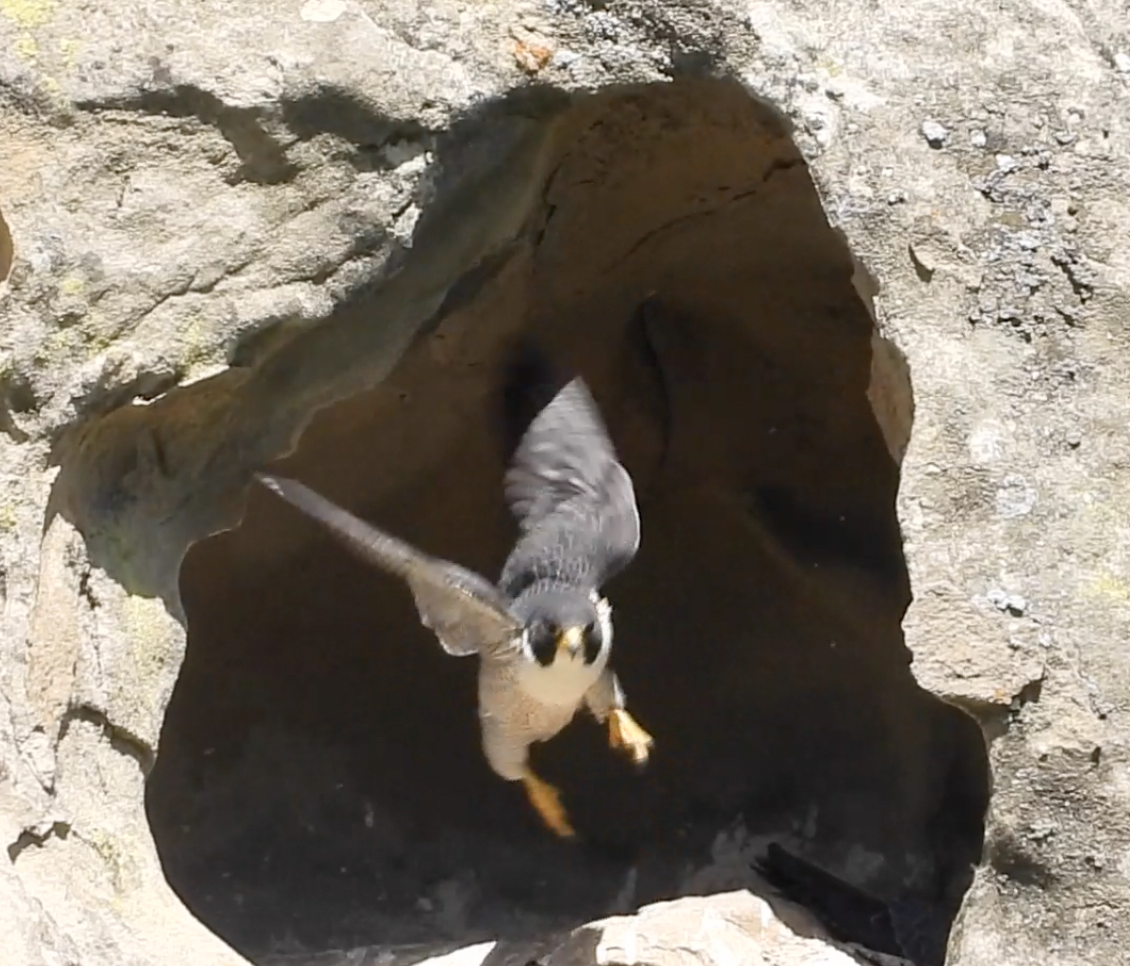
Peregrine falcon at Castle Rock in Mount Diablo State Park. Photo: Wallace De Young
Peregrine falcons, known for their incredible speed, are the fastest animals on Earth. When diving to catch prey, they can reach over 200 miles per hour.
Although they’re not as common on Mount Diablo as others in the genus, their dramatic hunts make any sighting unforgettable.
Thanks to dedicated conservation efforts, including by Save Mount Diablo staffer Seth Adams beginning in 1989, these falcons have made a strong comeback after being endangered in the mid-20th century.
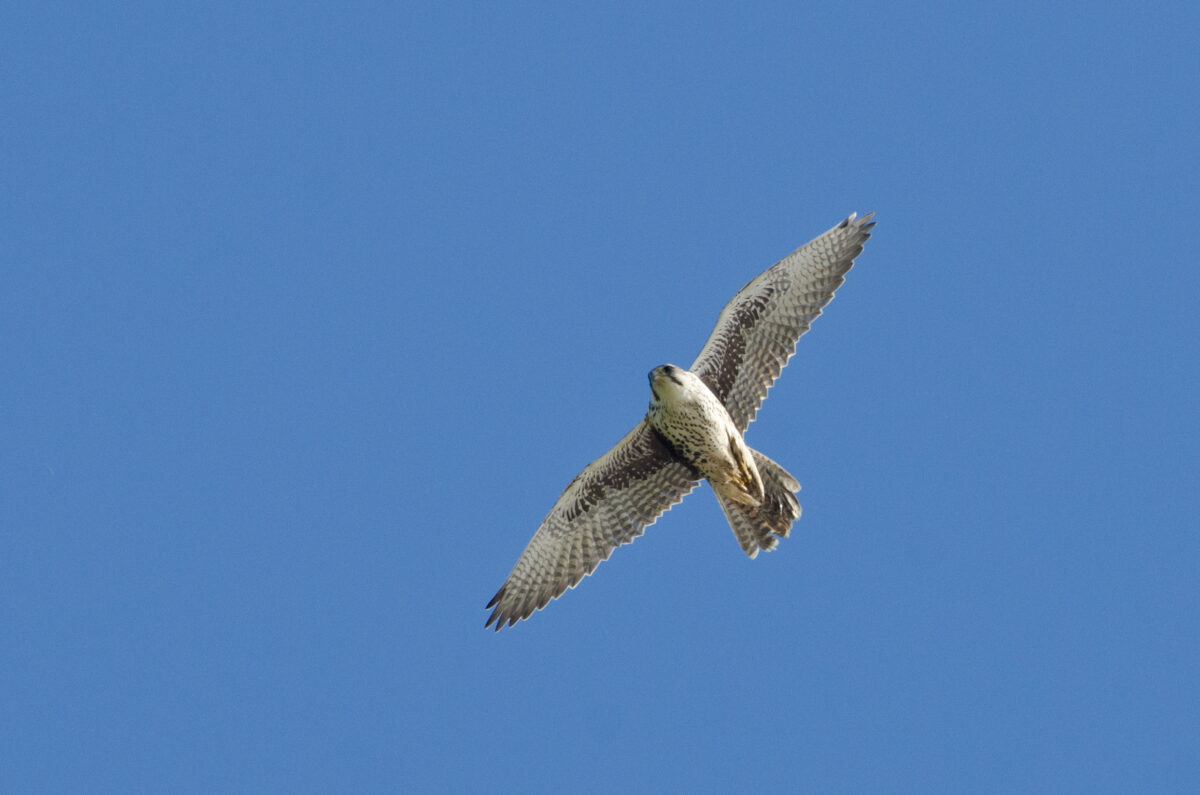
Prairie falcon spotted exploring the Diablo Range. Photo: Scott Hein
Prairie falcons, the peregrines’ slightly smaller relatives, are spotted on the mountain more often.
Known for their agile flying and preference for open grasslands, prairie falcons frequently hunt small mammals. Their swift, low-to-the-ground chases showcase their skills as aerial predators, perfectly suited for Mount Diablo’s varied terrain.
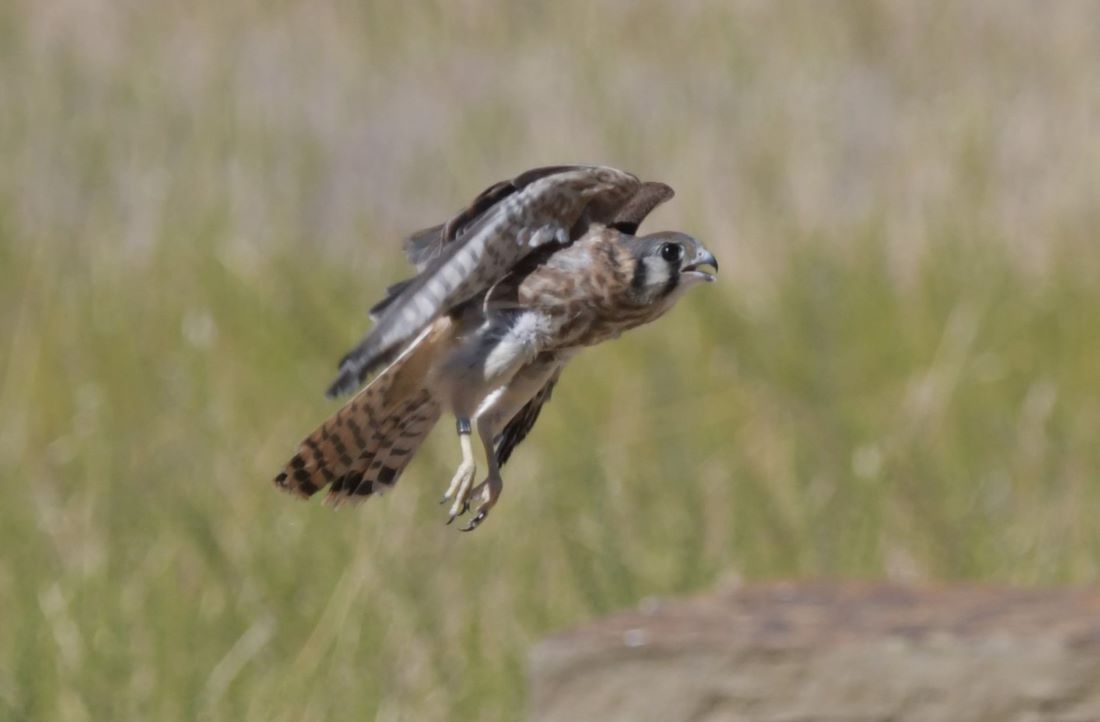
A kestrel fledgling takes flight. Photo: Sean Burke
American kestrels, though the smallest of the raptors, are no less fierce.
These brightly colored hunters are commonly seen perched along fence lines or hovering in place, scanning the ground for insects, reptiles, and small mammals, such as rodents.
Their bold orange and blue plumage is a striking contrast to the typically more muted tones of other raptors, and their small size makes them particularly agile hunters.
Majestic Eagles
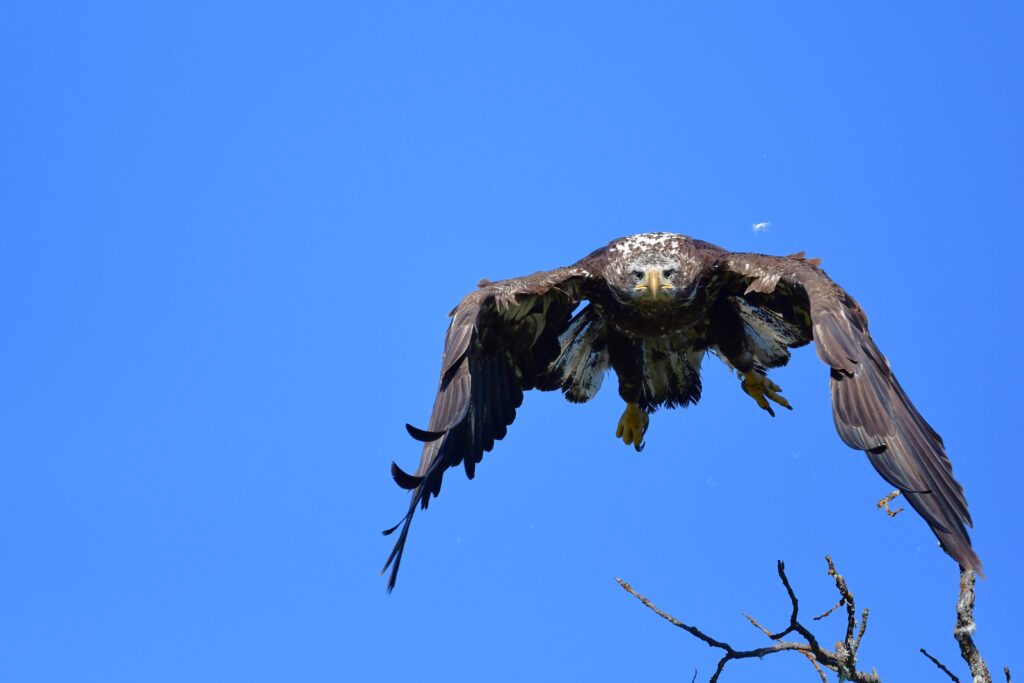
A juvenile golden eagle launches into the air during our 2024 BioBlitz. Photo: Sean Burke
Golden eagles reign supreme in the Diablo Range. Their breeding concentration is bigger in the northern Diablo Range than anywhere else in the world.
Their massive wingspan, sometimes over seven feet, makes them easily identifiable as they soar high above the peaks.
Known for their sharp vision and powerful talons, golden eagles hunt many forms of prey, including other birds and a variety of mammals, such as deer and jackrabbits. Seeing one up close is a truly breathtaking experience.
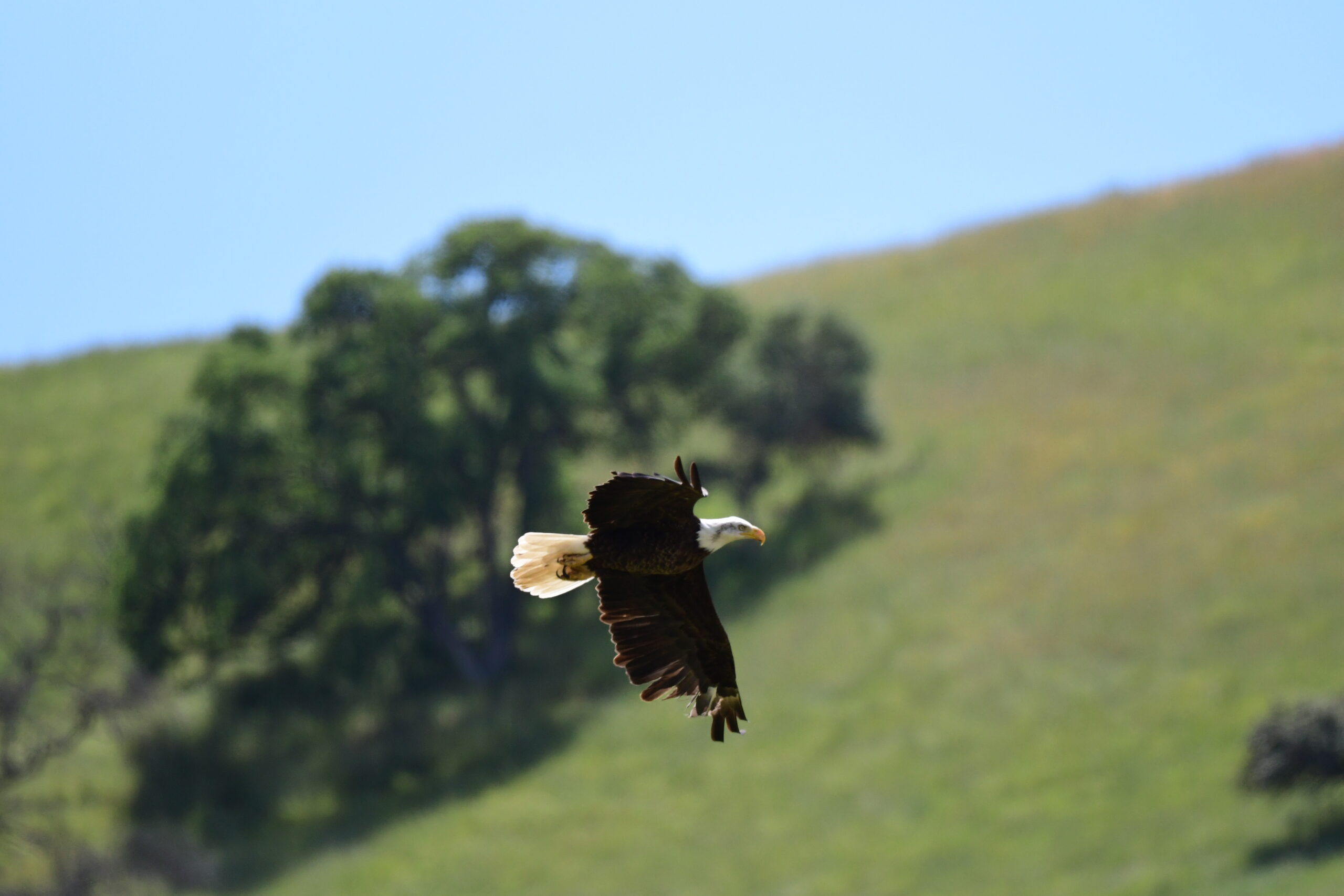
Farther south in the Diablo Range, a bald eagle flies above the San Antonio Valley Ecological Reserve. Photo: Sean Burke
Although a rarer sight than golden eagles and fewer in number, bald eagles visit the Mount Diablo area. Adults’ distinctive white heads and tails, and their powerful, broad wings make them unmistakable.
Usually found near larger bodies of water like lakes, reservoirs, and rivers, bald eagles use their talons and incredible strength to catch a variety of small animals, including fish; they also feed on carrion.
Hawks and More
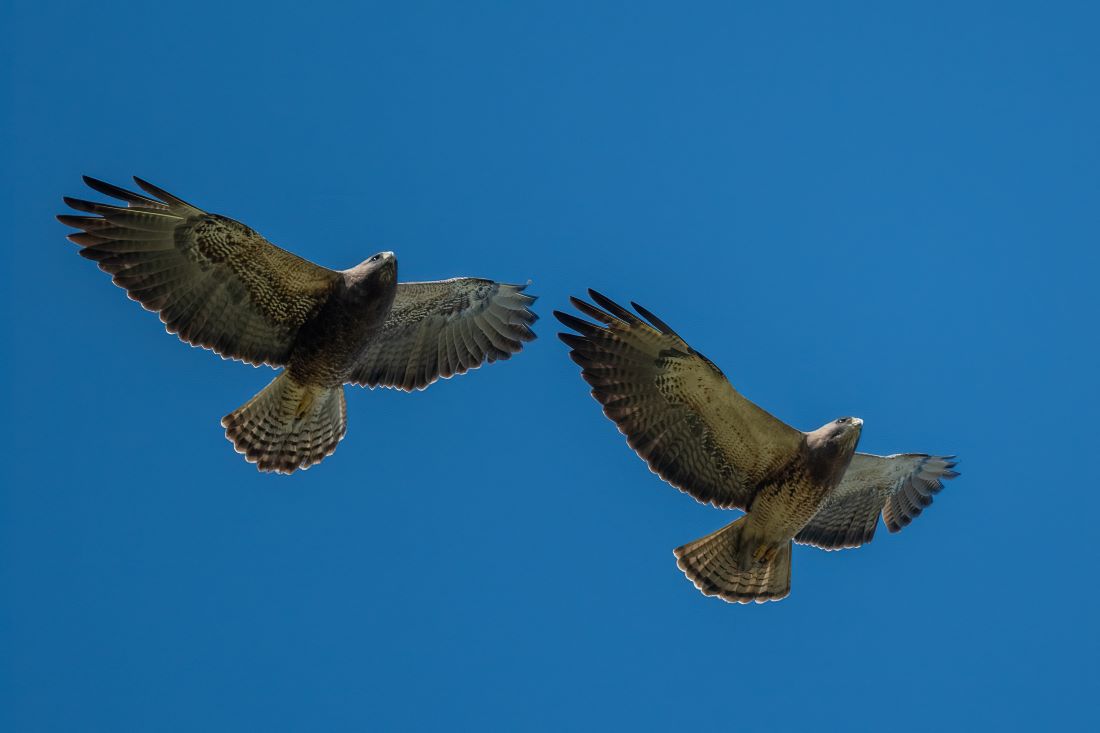
A pair of Swainson’s hawks soar above Panoche. Photo: Scott Hein
Swainson’s hawks migrate thousands of miles between North and South America; some of them pass by Mount Diablo on that journey. Large hawks, their brief presence is always a sign of the changing seasons.
Northern harriers are also frequent visitors, gliding in low and graceful flight patterns over grassy fields as they search for small mammals.
These slim hawks are distinguished by their owl-like faces, disks of stiff feathers that direct sound to the ears and help them detect hidden prey.
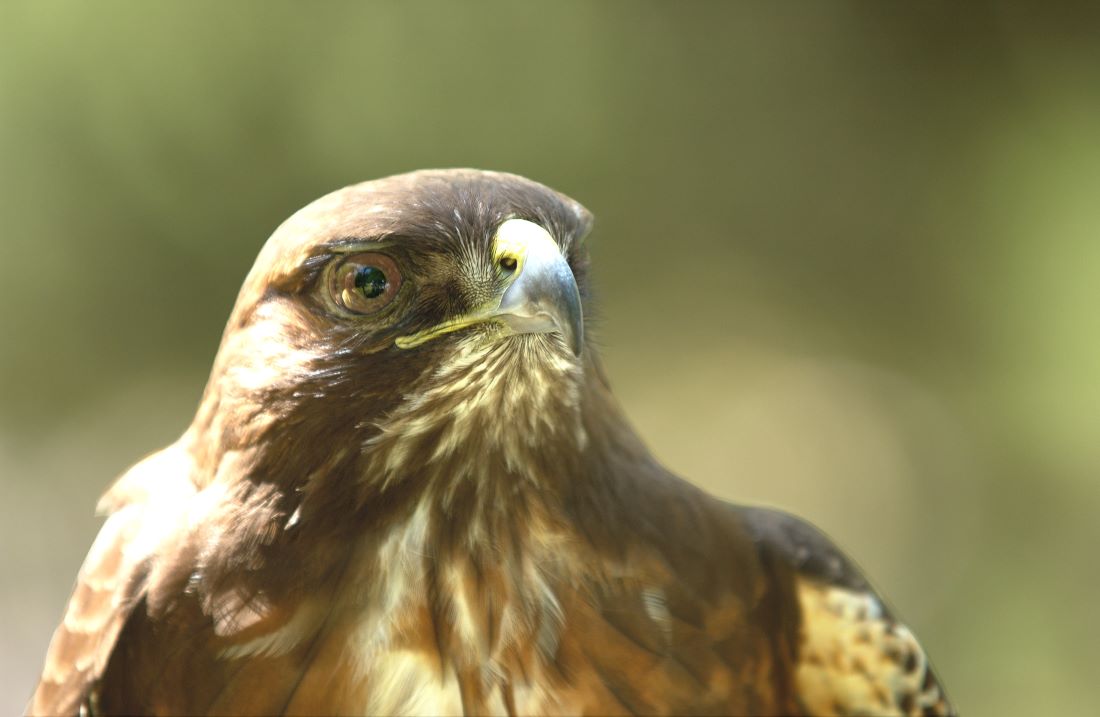
Up close and personal with a red-tailed hawk. Photo: Scott Hein
Red-tailed hawks are a familiar sight on Mount Diablo, and their reddish tails and broad wings make them easy to identify.
Often seen soaring over open fields or perched high in trees, they’re skilled at catching rodents and small animals.
Their cries, heard echoing across the mountain, are such a signature sound of open country that they’re often used in films.
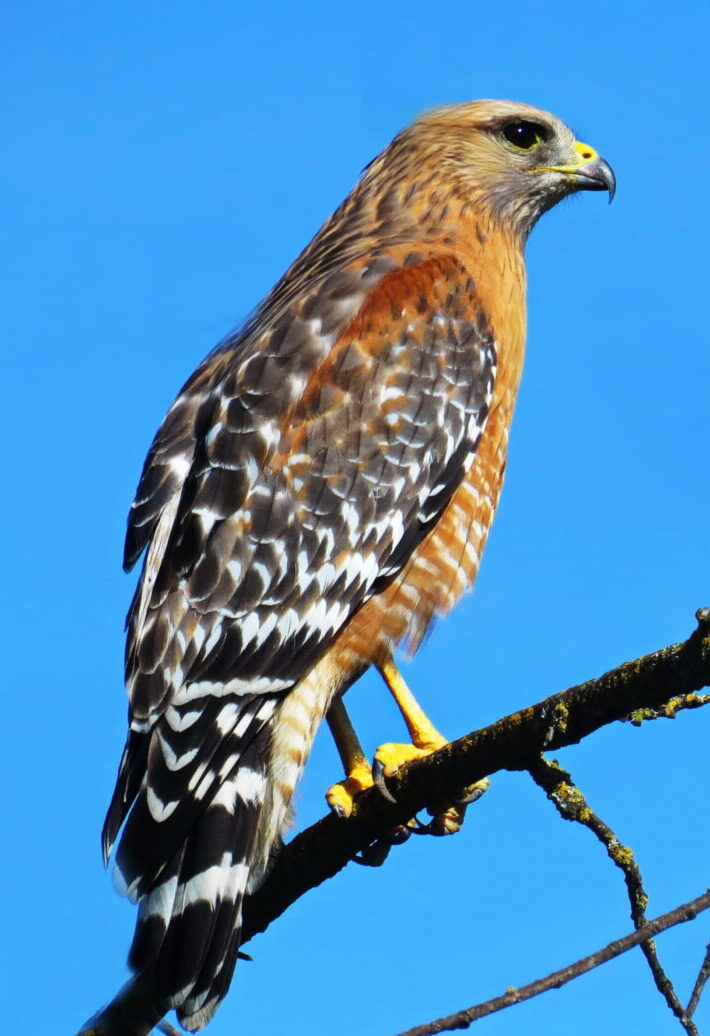
A red-shouldered hawk shows off her namesake. Photo: Ethan Winning
Red-shouldered hawks, known for their sharp, high-pitched calls, are typically found in wooded areas hunting, for small mammals and amphibians.
Their reddish-orange undersides and striking black-and-white patterned wings and tails make them a beautiful sight in flight.
Cooper’s hawks bring a different kind of intensity to the hunt. These medium-sized raptors with lightning-fast reflexes specialize in catching smaller birds, often chasing them through dense tree canopies.
Their sleek bodies and long tails give them an edge in navigating tight spaces like Mount Diablo’s woodlands.
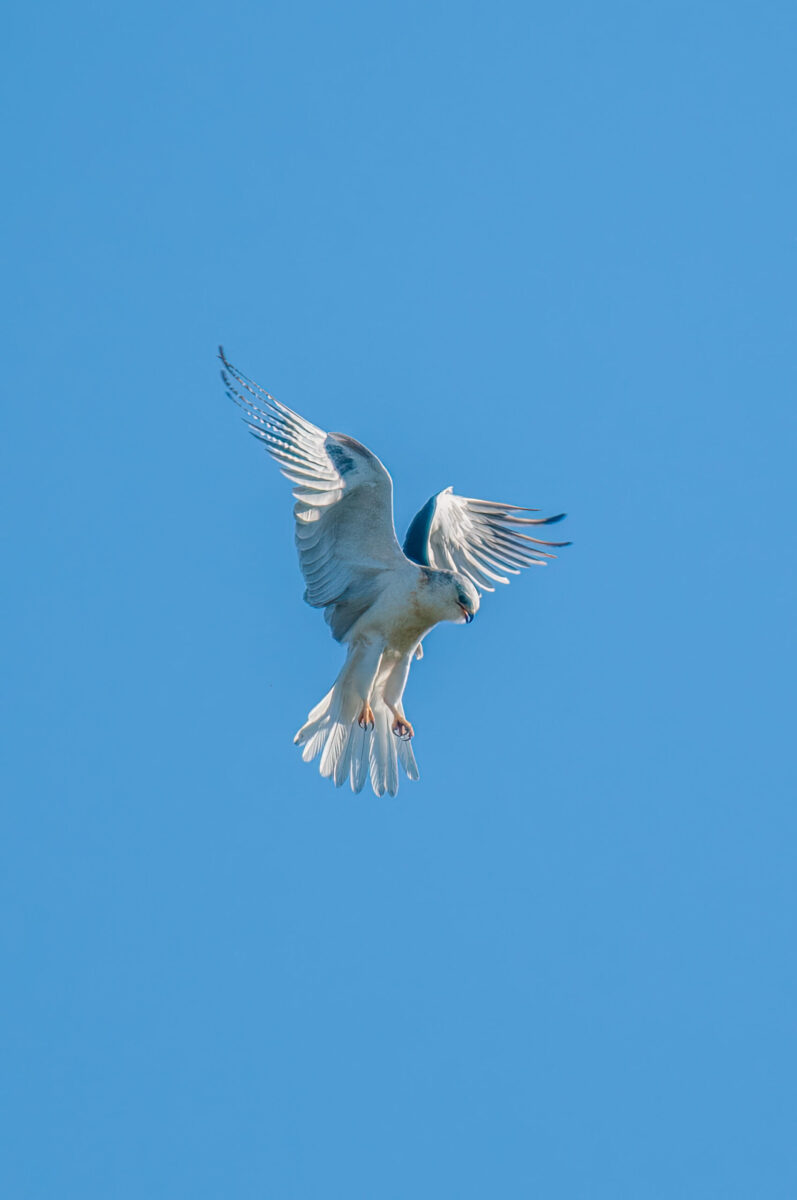
A white-tailed kite above Save Mount Diablo’s Mangini Ranch Educational Preserve. Photo: Scott Hein
White-tailed kites are a stunning addition to Mount Diablo’s skies.
Their white bodies, red eyes, and black wing markings are easy to spot and their delicate, fluttering flight, known as “kiting,” makes them a mesmerizing sight. They seem to hover in place as they search for prey.
These birds are adept hunters, often feeding on small rodents and insects.
Silent Owls
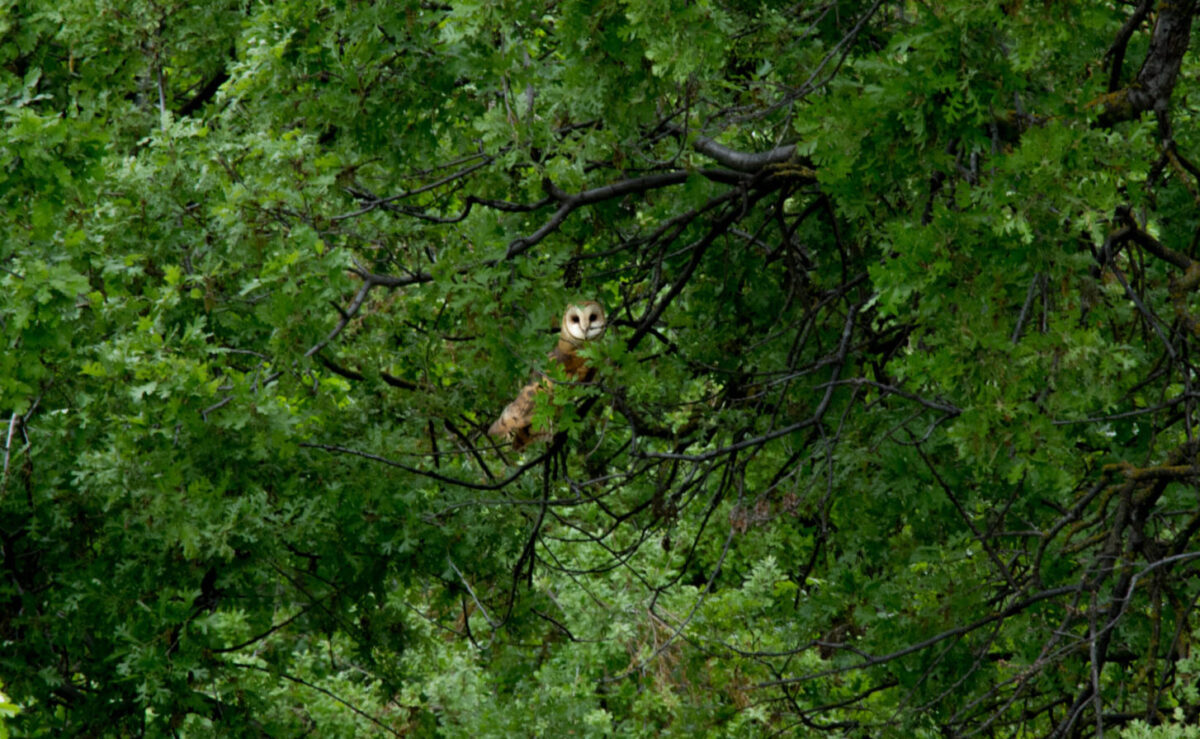
A barn owl discovered during one of our BioBlitzes at Marsh Creek State Park. Photo: George Phillips
The nighttime brings out another class of raptors—owls. Barn owls and great horned owls are the most common species on Mount Diablo.
Barn owls, with their ghostly white faces and silent flight, are masters of nocturnal hunting. Their keen hearing, together with their ability to swoop down on prey without a sound, makes them very efficient hunters.
They feed primarily on rodents and help to keep populations in check.
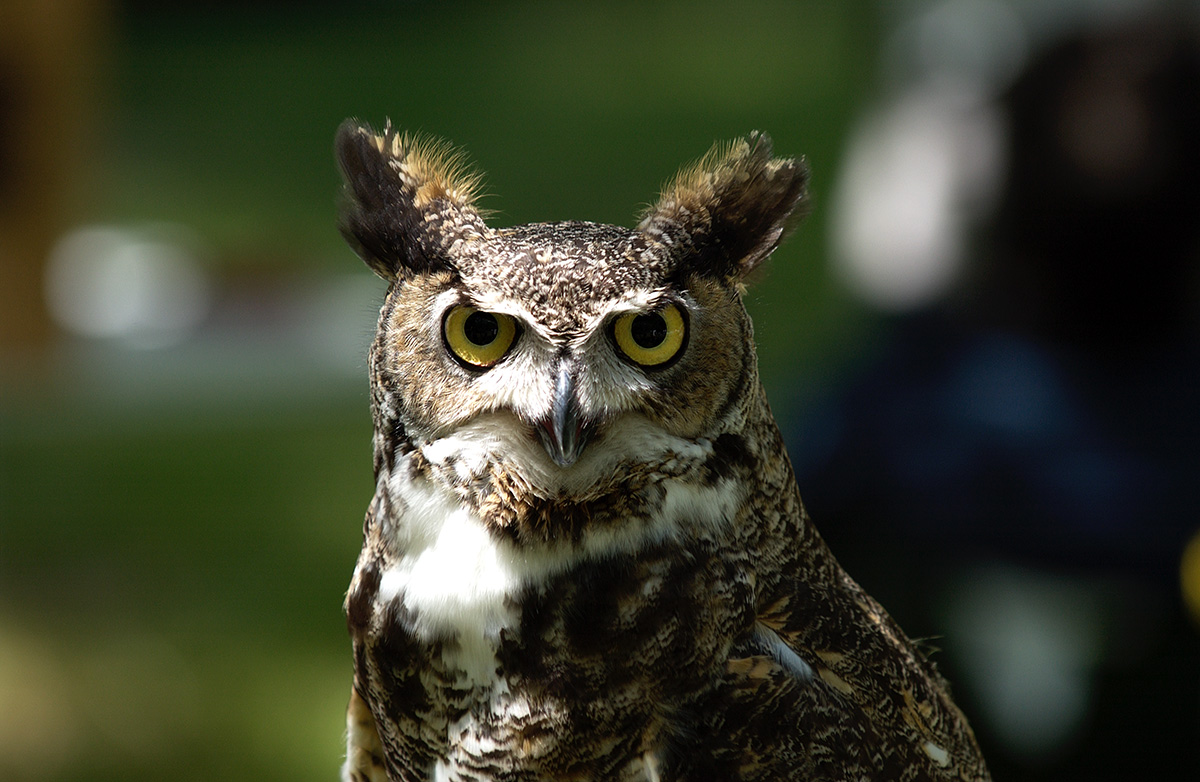
A great-horned owl oversees a Save Mount Diablo trail adventure. Photo: Scott Hein
Great horned owls are larger and more aggressive. Apex predators in their own right, with fearsome talons and sharp beaks, they’re powerful enough to take down prey as large as skunks and rabbits.
Sometimes called the hoot owl because of their deep hooting calls at dusk or dawn, they are more often heard than seen.
Nature’s Cleanup Crew
Raptors aren’t just hunters—the designation debatably includes vital scavengers like turkey vultures and California condors.
Turkey vultures—commonly seen circling the skies or basking in morning light—play an important role in the ecosystem by feeding on carrion.
Their keen sense of smell allows them to detect dead animals from high above. And their bald heads are perfectly adapted not only for thermal regulation but also for scavenging, preventing feathers from becoming soiled when feeding.
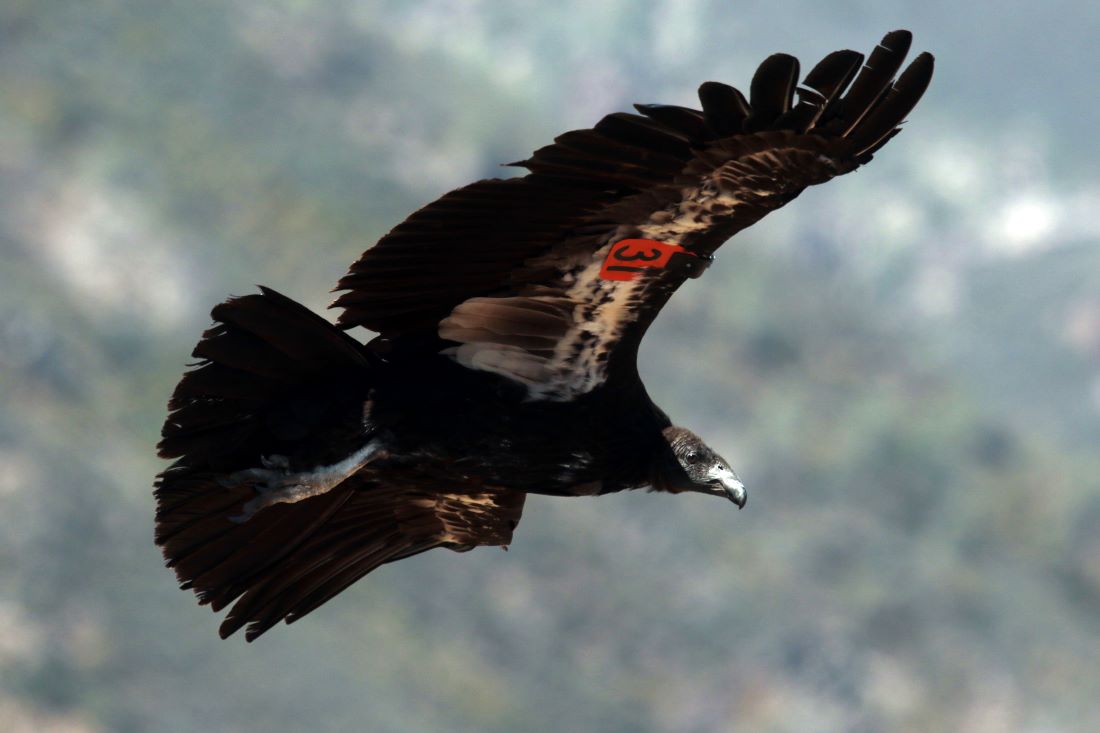
California condors use the Diablo Range as a wildlife corridor. Photo: Erin Lehnert
Sighting a California condor is a rare and wonderful thing. These majestic scavengers, with wingspans nearing 10 feet, are the largest birds in North America and feed on a variety of dead animals.
In recent years, as a result of efforts launched in the late 20th century to prevent their extinction, condors have made an extraordinary recovery.
In 2024, seven condors visited the Mount Diablo area, the fourth time since 2021 that condors have flown so far north from their homes around Pinnacles National Monument and other parts south.
Before 2021, California condors hadn’t been recorded near Mount Diablo for over 100 years.
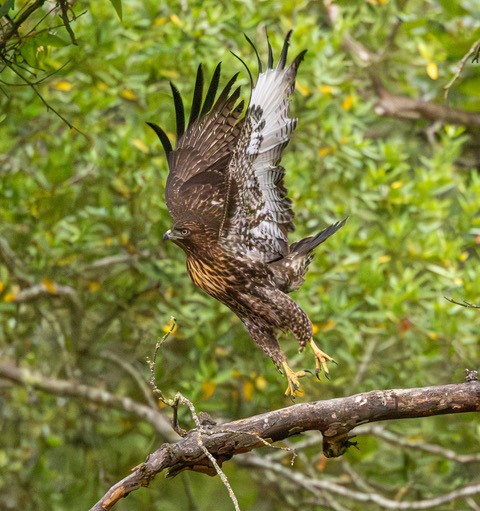
Juvenile red-tailed hawk. Photo: Joan Duffield

